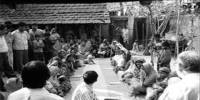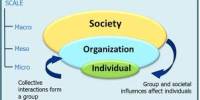GEOGRAPHICAL LOCATION
Poland is to be found at the center of the European continent, with an area of 312,683 sq/km. It has a frontier of 3,582 km, including 528 km of coastline. To the west, the Polish/German border runs along the Oder and Neisse rivers. To the north, Poland is bordered by the Baltic Sea and by Russia. Poland is separated from the Czech Republic and Slovakia to the south by the Sudeten and Carpathian Mountains, whilst its eastern neighbors are Lithuania, Belarus and the Ukraine. In general, Poland is a flat country with an average height above sea level of 173 in (568 ft). Over 75% of the country lies below200m(650ft).
CLIMATE
Poland’s climate is greatly influenced by oceanic air currents from the west, cold polar air from Scandinavia and Russia, as well as warmer, sub-tropical air from the south. In winter, polar-continental fronts dominate, bringing crisp, frosty weather. The late summer and autumn months enjoy plenty of warm days, thanks to the influence of the dry, sub-tropical, continental air mass. The greatest amount of sunshine in summer is to be found on the Baltic coast, whilst in winter this is true of the Carpathian Mountains. In the mountains, at any time of year, the climate is dependent on the altitude. In Warsaw, temperatures range from between 200 to 250C (680 to 77’F) during the summer months andO’to-50C(320to23″F)inwinter.
POPULATION AND LANGUAGE
At the end of 19-93, Poland had a population of 38.5 million. It is estimated that this will rise to 39.5 million by the year 2000. In 1991, the average life expectancy was 66.1 years for men and 75.3 years for women. 61.8% of the population lived in cities in 1993. Polish
Is the official language.
POLITICAL SYSTEM
Parliamentary democracy was established in Poland in 1991. This concluded a process set in motion by the “round-table” talks between the Communist govern-ment then in power and representatives of the Opposition (6th February-5th April 1989). As a result, constitutional reforms were agreed upon and free elections called. The Constitutional Amendment of 7th April 1989 established the institutions of the President of the Republic and that of the Senate. As a consequence of these Essential changes in the socio-political system, the name of the state reverted to its historical antecedent: the Republic of Poland. The supreme state authority is the Sejm (Lower House), but its powers are, to a Certain extent held in check by the Senate and the President. The Sejm consists of 460 Deputies. The Presidium, the Council of seniors and Parliamentary Commissions are the main bodies of the Sejm. The Presidium’of the Sejm is composed of the Speaker and Deputy Speakers. Parliamentary parties (caucuses) are the basic forms of political Organization in the Sejm. The Senate is a representative body. Its major task is to participate in the legisla-tive process. It can also propose Bills. The Senate speaks for local government, as well as being a watchdog for civil rights and liberties. The Senate consists of 100 Senators elected for the ten-n of office of the Sejm. Its institutions are the Speaker of the Senate, the Presidium, and Senate Commissions.
The President is the most senior representative of the Polish State, both in national and international terms. He is the guardian of the Constitution as well as of Poland’s territorial integrity and the maintenance of international political and military alliances. The Presidential Chancellery is the executive arm of the
President’s office.
The Prime Minister, proposed by the President to the Sejm for approval, forms the Government, which must also be approved by the Sejm. Governmental institutions consist of the Prime Minister, the Government’s Presidium, and the Office of The Council of Ministers.
HISTORY
Slav Origins:
Most Scholars agree that the original Slav homeland lay within the boundaries of modern Poland in the Odra (Oder) and Wisla (Vistula) basins. The Slavs subsequently expanded into territories to the east, south and west and became increasingly differentiated until, by AD 800, three main geographical and linguistic divisions had arisen; the East Slavs inhabiting a large part of European Russia, the South Slavs who settled in the Balkan Peninsula, and the West Slavs who settled in what is now Poland, Czechoslovakia and East Germany.
The West Slavs suffered different fates; the Lusatians and Veleti were absorbed by German expansion, the Czechs and Moravians merged to form the nucleus of the Czech Kingdom, whilst the Slovaks became part of the kingdom of Hungary. The remaining tribes, including the Polanie, Wislanie, Pomorzanie and the Mazovians, joined together (in time) to form the Polish State.
Foundation: 966-1138.
The Polish Baptism of 966 came about as a result of the concerns of Mieszko, or Mieczyslaw I, chief of the Polanie, raised by the establishment of the German Empire of Otto I (962). He decided to marry Dobrava, the daughter of Boleslav I of Bohemia, and accepted Christianity for himself and his people, thus preserving their independence. In 1000, at the Congress of Gniezno an independent Polish Church organisation was set up with the agreement of Otto III, but formed according to the Czech, rather than German, system. Thus the Polish Church could turn directly to Rome, and the Pope, for protection and would not fall under the influence of the Germans.
The Coronation of Boleslaw Chrobry (the Brave) As the first king of Poland, in 1024, established Poland`s right as an independent kingdom.
Disintegration and Reunification: 1138 – 1370.
In 1138 the Testament of Boleslaw III shattered the precarious unity of Poland by dividing the realm among Boleslaw`s sons. This was the start of 150 years of dynastic struggle, in which the Church played a vital role in maintaining some semblance of national unity.
In 1226, Duke Konrad of Mazovia invited the Teutonic Order to combat pagan Prussian tribes from the base a Chelmno, thereby introducing a much more formidable enemy on the crucial Baltic coast. In time the Order turned on the Poles and began to grab large chunks of Polish territory, finally invading Gdansk in 1308 and massacring its Polish inhabitants. At the same time, a steady influx of German colonists helped to consolidate the Order`s wealth and power.
1241, 1259 and 1287 saw devastating Tartar invasions. During the consequent reconstruction many new urban centres developed whilst older ones expanded. As part of the process of repopulation large numbers of foreign settlers arrived and rural colonisation took place. Many of these new settlers were Germans and, whilst some were gradually “Polonised” others merely helped strengthen German political influence (especially in Silesia). It is during this period that the first Jewish settlers came to Poland where they were treated with more tolerance than in the rest of Europe, so-much-so that the Polish Synod was berated by the Papal Legate, in 1266, for allowing Jews to dress like anyone else and being able to live without restrictions in Poland, and for a royal charter having been granted them by Boleslaw the Pious in 1264.
A brief period of Czech rule from 1300 – 1305, under Vaclav II, reunited a main part of Poland, stimulating a national reconstruction led by Wladyslaw Lokietek. Then, in 1320, Wladyslaw I (Lokietek) was coronated; the first ruler of the reunited kingdom.
In 1333-1370 Casimir the Great (Kazimierz Wielki) built Poland into a major Central-European power, increasing her territory 2.5 times, bringing it`s size up to 270,000 sq.kms. There is a saying that “he found Poland built of wood, and left her in stone,” so great was his activity as founder and planner of towns.
Under Casimir, in 1346, the first Polish Legal Code was made, and in 1364 the foundations of Krakow University (the second oldest in central Europe) were formed. Trade also became important due to Poland`s position on the commercial routes leading from East to West and from South to North.
The Jagiellonians, 1386-1572. Rise to Greatness.
Casimir was the last King of a purely Polish state. Hence forward, dynastic problems provoked a series of unions with neighbouring states: Hungary (1370-84; 1434-44; 1576-86); Lithuania (1386-1795); Sweden (1587-1600); and Saxony (1697-1764). Only the Lithuanian union succeeded, creating a state which dominated east-central Europe until the seventeenth century (the Polish Commonwealth).
In 1386 the marriage of Jadwiga, King (sic) of Poland, to Jogaila, pagan Grand-Duke of Lithuania, baptised as Wladyslaw Jagiello, initiated the Lithuanian union, inspired by the common purpose of resisting the Teutonic Order. Then, in 1410 at the Battle of Grunwald (Tannenburg), Wladyslaw Jagiello crushed the Teutonic Order. The Catholic Polish knights were a minority in an army made up of Lithuanian pagans, Orthodox Christians, Lithuanian Muslim Tartars and “heretical” Bohemian Hussites. This victory helped strengthen the bond between the Poles and the Lithuanians and, in 1413, led to the Treaty of Union at Horodlo.
In 1440 the Magyars offered Wladyslaw III (Wladyslaw Jagiello`s son) the crown of Hungary; Poland`s attention shifted to the plains of Hungary and the growing Turkish threat. In 1444, the combined Polish Hungarian forces were defeated by the Turks at Varna on the Black Sea and Wladyslaw was killed. For a brief period the Hungarian throne passed out of Polish hands. Wladyslaw III`s brother, Casimir IV, started a prolonged war against the Teutonic Order in order to recover Pomerania and Gdansk. The subsequent victory in 1466, led to the Peace of Torun by which the Order was humiliated and Prussia was partitioned: Royal (West) Prussia came under direct Polish rule, the Grand-Master of the Order keeping Ducal (east) Prussia as a vassal to the Polish Crown. During the Reformation The Grand Master split with Rome, and by becoming a vassal of the Polish King was able to turn East Prussia into a Duchy.
In 1471 Casimir was elected King of the Czechs. His son, Wladyslaw became King of Bohemia and Hungary in 1490.
1490-1526 saw the Jagiellonian rule in Hungary, and the peak of Central European dominance. The dual realm now stretched from the Baltic to the Black Sea, and from the borders of Silesia to within 300 miles of Moscow. It contained a rich mixture of nationalities and beliefs; Poles in the west and centre, Lithuanians, Latvians and Estonians in the north, Lutheran Germans in Prussian and the western frontier, Orthodox Ukrainians and Byelorussians in the east, Moslem Tartars in the east also (these are the oldest Moslem communities in the Christian world) alongside the Karaites (a mixture of Khazar and Kiptchatska-Polovetska peoples, and practising a unique mixture of Judaism and Islam), and Jews scattered throughout.
This period saw some important developments in the government of Poland; in 1430 the law “Nieminem Captivabimus” (the Polish “Habeas Corpus”), in 1493 the establishment of a Parliament with two houses, the Senate (dignitaries, archbishops, and officers of the realm) and the Sejm (elected representatives). In 1505 the Statute of “Nihil Novi” enacted that nothing new could be decided without Parliament`s consent. This “Golden Age” saw many foreign scholars, writers, artists and architects attracted to Poland, especially from Renaissance Italy. It was also the age of Copernicus and of the first great figures in Polish literature; Mikolaj Rey (the first to write exclusively in Polish) and Jan Kochanowski (the “father” of Polish poetry).
This was also, in Europe, a time of religious diversion and persecution. When pressed to take sides in the dispute between Catholics and Protestants, the king, Zygmunt August, said: “I am the King of the people-not the judge of their consciences.” This spirit of tolerance attracted many refugees from religious persecution throughout the history of Poland before the partitions; Jews in the 13th century, Hussites in the 15th, and Catholics from England and Scotland in the 16th and 17th centuries.
The Union of Lublin was a formal union of Poland and Lithuania; the “Rzeczpospolita Polska” (the Polish Commonwealth). This was formed in 1569.
The Elected Monarchy.
With the death of Zygmunt, the last of the Jagiellonians in 1574, there was nobody who could legally convene the Sejm. An “interrex” (Regent), the Archbishop of Gniezno, was appointed by the Senate and a special “Convocational Sejm” was called which decided to let the “szlachta” (nobility) the elect a king in a free election. Prior to his coronation the king-elect had to swear to uphold the Constitution and all “szlachta” privileges.
The first elected monarch was Henri d`Anjou, but he resigned half-way through the year in the hope of succeeding to the French throne instead. The second election winner was the Transylvanian Voivod (Prince), Stefan Batory, who became one of Poland`s most celebrated rulers, great in both war and peace.
Batory carried out important reforms, encouraged further overseas trade and created the first regular Polish infantry by conscripting peasants from the Royal estates. In 1579 he created the University at Wilno (the eastern most outpost of Western European culture).
Between 1579 and 1582 Batory came to the aid of Inflanty (Livonia: modern day Estonia and Latvia) which has been attacked by the Muscovite Tsar, Ivan the Terrible. After a successful campaign and a brilliant victory at Pskov Batory accepted the Muscovite plea for peace; Livonia joined the Commonwealth and Poland was now recognised as the greatest power in Central Europe and only the Turkish Sultan ruled over more extensive territories.
After the unexpected death of Batory in 1586, the third election brought the Swedish crown prince, Zygmunt Vasa, to the throne. There would eventually be three Vasa Kings and the period would see long rivalry and wars between Poland and Sweden for the control of the Baltic. Under his reign the Polish magnates (great lords) rose to a position of power and would eventually destroy Poland through their greed.
In 1595 and 1596 the Synods of Brzesc (Brest) Litewski saw the Ruthenian (now Byelorussian and Ukrainian) Orthodox clergy recognise the supremacy of the Pope whilst retaining their distinctive religious rites and liturgy.
King Zygmunt III Vasa decided to move the capital from Krakow to Warsaw, the junction of all major routes crisscrossing the Commonwealth. This was done in 1596.
From 1609 Poland became involved in a series of wars and was invaded by Swedes, Turks and Muscovites in such numbers that the country was almost submerged by enemy forces; this period became known as the “Deluge”. The devastation and loss of life were tremendous and Poland was only saved by a number of outstanding military commanders (Jan Zamoyski, Stanislaw Zolkiewski, Jan Karol Chodkiewicz and Stanislaw Koniecpolski) who archived some great victories (Kluszyn, 1610; Kircholm, 1605; Chocim, 1612).
One historic episode during the “Deluge” was the defence of Czestochowa, Poland`s most sacred shrine containing the picture of the Virgin Mary (the “Black Madonna”), by a small force led by the Prior and his monks against a besieging army of 9,000 Swedes. This defence actually changed the course of the war.
A particular danger came from within as the Cossacks (a Turkish word meaning “freebooter”), a people of mixed origin but mainly Ruthenian and Pole, constantly changed sides, breaking their oath of allegiance to the Polish King. In 1648 the Cossack Hetman, Chmielnicki, led a great uprising which was put down. Chmielnicki now used the Ukraine as a pawn between the powers of Poland, Muscovy and Turkey which resulted in further wars. In 1658, at Hadziacz, an agreement between the King and the new Cossack Hetman, Wyhowski, was to enable Ruthenia to join the Commonwealth on equal terms with Poland and Lithuania but a further Cossack rebellion, in 1659, instigated by Muscovy (herself attempting to annex the Ukraine) and Polish involvement in war with Sweden, meant that the agreement bore no fruit and in 1667, by the treaty of Andruszowo, the Ukraine was divided evenly along the Dnieper between the Commonwealth and Muscovy. For the Polish Commonwealth this was a disaster since it weakened an important frontier area and left a discontented people open to manipulation by Poland`s enemies.
Following a stormy election, Michal Korybut Wisniowiecki, called “Piast” (referring to Poland`s earliest dynasty) was elected in 1669. He proved to be largely ineffective and became a tool of the magnates.
Later, in 1672. the Turks invaded the Commonwealth and imposed the treaty of Buczacz on the Poles by which Turkey occupied Podolia and the southern part of the Kiev region. In 1673, Hetman Jan Sobieski scored a splendid victory over the Turks at Chocim which, though not changing the provisions of the treaty, enabled Sobieski`s election to the throne.
1674-1696 heralded the of Jan III Sobieski, a great military leader who had virtually annihilated the Turkish forces at Chocim and had been given by them the nickname of the “Fearful Lion of the North.” Unable to break into Europe through Poland, the Turks invaded Hungary and Austria in 1683 and swept all before them. 130,000 Turks besieged Vienna and threatened to overpower Europe. Sobieski, at the request of the Pope, marched on Vienna, sent the “Hussaria” into their last great charge and took the Turks unawares. It was a turning point in history.
CITIES AND PROVINCES
About 60 percent of the population lives in cities. There are a number of large cities, including five with populations of more than 500,000. The largest is Warsaw, the capital, with about 1.7 million inhabitants. Lodz has approximately 850,000 people. Other large cities are Krakow (Cracow), Wroclaw, Poznan, Gdansk, and Szczecin.
POLAND HOTELS GUIDE
Poland hotel, Warsaw hotel, Krakow hotel reservation at discount rates – Travel Poland .com is a leading Internet reservation network offering hotels in Poland. We offer the most competitive prices for your Poland hotel, Warsaw hotel , Krakow hotel and all other hotels incities of Poland . We reserve hotels in Poland at biggest discount up to 55% of full rates. Our Poland hotel listings are updated daily and offer the widest range of accommodation at the cheapest prices. Whether it`s business trip or a vacation in Poland our search hotels facility is your first step to finding the appropriate accommodation in Poland hotel. The reservation procedure is completely secure and you will enjoy our excellentpremier services.
Travel Poland .com is a representative for all business associations in the polish travel industry and is recognized as such by the Polish Travel Association which has ranked and distinguished the services provided by Travel Poland .com above all other hotel in Poland reservation systems and appoint us to become the Official Web Site of Poland Tourism
Easter special offert – One night free!
April/May holiday – One night free! May holiday special offert – One night free!
Our Poland Special €86 for 5 ***** hotel in Warsaw >>>
!!! HOT DEALS ON POLAND HOTEL !!!
POLAND HOTEL STARS CITY PRICE from
MARRIOTT – 55%off ***** WARSAW € 69
COURTYARD BY MARRIOTT
– 53% off **** WARSAW € 61
POLONIA PALACE – 53%off **** WARSAW € 60
PODEWILS – 52%off ***** GDANSK € 65
ALEXANDER – 23%off *** KRAKOW € 37
CLASSIC – 41%off *** KRAKOW € 44
POLISH TRANSPORTATION
RAILWAYS
Railway services in Poland are much cheaper than in Western Europe, and at the same time their quality usually compares with European standards. The fastest connections are as follows: Krakow (Katowice) – Warszawa, Poznan -Warszawa and Wroclaw – Poznan, operated by express trains, IC and EC. A journey by a fast train from Krakow to Warszawa takes 2 h 35 min (on the distance of 292 km.)
The lengths of journeys on the main domestic routes are:
Warszawa – Lodz (1h40)
Warszawa – Krakow (Ex 2h35, pos. 5 h)
Warszawa – Wroclaw (Ex 4h40, pos. 5h30)
Warszawa – Poznan (Ex 3h, pos. 3h40)
Warszawa – Gdansk (4h-4h30)
Warszawa – Lublin (2h20)
Warszawa – Katowice (Ex 2h40, pos. 4h-4h30)
Warszawa – Czestochowa (2h30)
Warszawa – Torun (2h30)
Warszawa – Olsztyn (3h)
Warszawa – Suwalki (5h-5h30)
Krakow – Wroclaw (4h-4h30)
Krakow – Czestochowa (2h)
Krakow – Przemysl (3h40-4h)
Krakow – Zakopane (2h40-3h15)
Krakow – Krynica (4h30)
Krakow – Zagorz (6h)
Krakow – Zamosc (7h30)
Krakow – Auschwitz (1h30)
Wroclaw – Poznan (Ex 1h40, pos.2h)
Wroclaw – Zielona Gora (IC 2h, pos. 2h30)
Wroclaw – Jelenia Gora (2h40)
Poznan – Gdansk (4h)
Poznan – Szczecin (Ex 3h, pos. 3h40)
Poznan – Torun (2h30)
Szczecin – Swinoujscie (2h15)
BUSES
Bus transport is run by state companies, mainly PKS and PPKS; however, you may come across private transport agents. The prices of bus tickets are comparable to train tickets, or even much lower in case of private companies. Bus stations are most frequently situated in the vicinity of railway stations in the city centres.
PUBLIC TRANSPORT IN CITIES AND TRANSPORT
Public transport services are usually provided by state companies which operate buses, trams and trolleybuses; sometimes also private enterprises offer bus transport. Public transport is usually well organised and relatively cheap. A single ticket costs about 2 zl (0.5€), depending on local prices. It is economical to buy daily, weekly and monthly tickets when possible.
In Warszawa (Warsaw) you may take the underground which has been built quite recently. Also trams belong to the most convenient means of communication, because they do not get stuck in traffic jams as often as buses or cars do. Tram services are popular in such cities as Warszawa (Warsaw), Krakow (Cracow), Lodz, Poznan, Wroclaw, Szczecin, Katowice Conurbation, Gorzow Wielkopolski, Trojmiasto (consisting of three cities: Gdansk, Gdynia and Sopot) and in Czestochowa.
RENT A CAR
In each city or bigger town there are several hiring agencies where you can hire a car: the cheapest one is Polonez, a Polish make; the charge is usually 90-100 zl for 24 hours plus extra payments for the kilometres you drive.
It is much more expensive to hire a foreign car: we recommend you to use the services of such firms as Hertz or Avis, which are well known in Europe. The charges range from 250 to 400 or 500 zl for 24h, depending on the make of the car and the time when you hire.
SHOPPING
In Poland shops are usually open from early morning to late evening. In big cities you may also easily do shopping at weekends; many shops are open 24 hours.
The offices are opened at 8-10 a.m. and closed between 3 and 5 p.m., but there are many exceptions to this rule.
Restaurants, bars, cafes, bistros and pubs are usually opened around noon and closed at 10 -11 p.m. Many restaurant and pub owners, however, meet the clients` expectations and do not impose any time limits as for the closing hours.
POLISH FOOD & DRINKS
Food prices in Poland are lower than in Western Europe, both for products sold in shops and for meals at restaurants. Still, it is sensible to check the prices before you choose the restaurant.
The majority of restaurants offer their menus also in English version and, more seldom, in German and French.
Polish food itself is of high quality and many foreign visitors are delighted by even a plain dish or its single ingredient. Foreigners tend to enjoy eating Polish meat products.
The main ingredient of Polish meals are potatoes eaten in large quantities, as the Poles cannot imagine their dinner without these vegetables. Naturally, in each restaurant a selection of other garnish is offered. A great many of salad bars and vegetarian restaurants are being opened. For those who prefer eating cheap meals, Bar Mleczny may be a highly recommended place. You should not be misled by its name, as it is only customary. There is a whole chain of Bary Mleczne in many cities and towns; low prices and no alcoholic drinks are their common feature. However, the food quality vary: sometimes it is acceptable, sometimes may not be particularly high.
There are numerous pretty good restaurants which serve dishes of foreign cuisine; to the most popular ones belong Chinese or Vietnamese restaurants, but you may find also Italian, Greek, Hungarian, French, or even Jewish, Russian, Ukrainian, Turkish or Arabic restaurants.
















